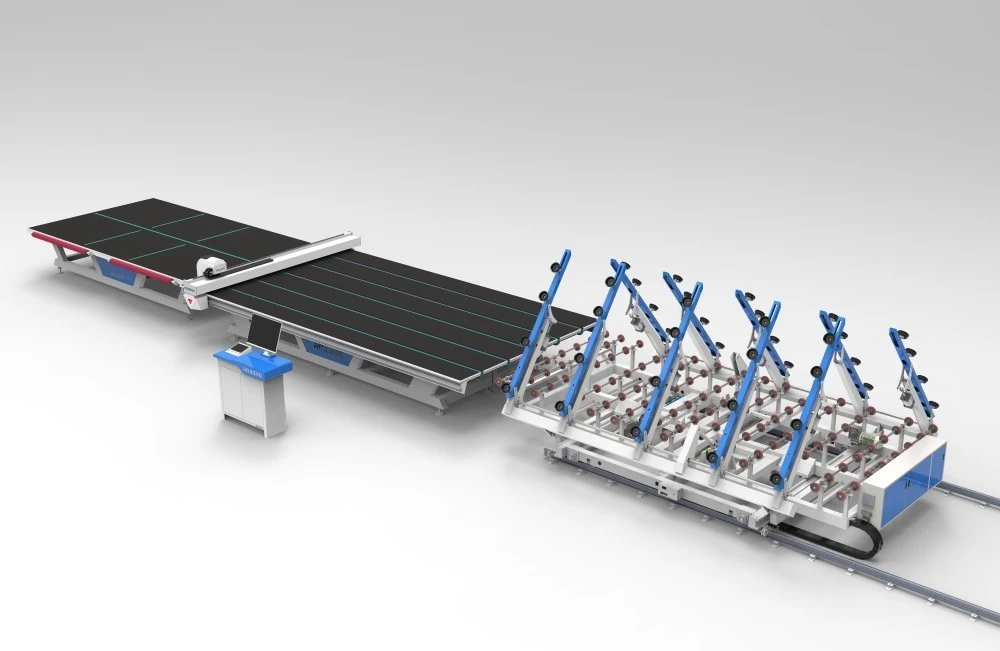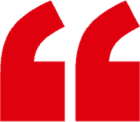Upfront investment vs. long-term savings
When considering the adoption of an integrated glass cutting machine, the initial investment often appears substantial. These cutting-edge machines incorporate advanced technology, precision controls, and automated systems that contribute to their higher price tag. However, a myopic focus on upfront costs can obscure the long-term financial benefits that these machines offer.
Traditional glass cutting methods typically rely on a combination of manual labor and less sophisticated machinery. While the initial outlay for these tools and equipment may be lower, they often lead to higher operational costs over time. In contrast, integrated systems provide a range of advantages that translate into significant long-term savings:
- Enhanced precision: Integrated machines drastically reduce material waste by executing cuts with unparalleled accuracy. This precision minimizes the need for rework and reduces the amount of scrap glass generated during production.
- Increased throughput: The automated nature of integrated systems allows for faster processing times and higher production volumes. This increased efficiency can lead to substantial gains in output without a proportional increase in operational costs.
- Energy efficiency: Modern integrated glass cutting machines are designed with energy conservation in mind. They often incorporate features like optimized cutting paths and intelligent power management systems that reduce energy consumption compared to traditional methods.
- Reduced maintenance: While traditional equipment may require frequent repairs and replacements, integrated machines are built for durability and longevity. Their robust construction and advanced diagnostic capabilities often result in lower maintenance costs and less downtime.

To illustrate the long-term savings potential, consider a hypothetical scenario where a glass manufacturer invests in an integrated glass cutting machine. Although the initial cost might be 200% higher than traditional equipment, the integrated system could potentially reduce material waste by 15%, increase production capacity by 30%, and lower energy consumption by 20%. Over a five-year period, these efficiencies could result in savings that not only offset the higher upfront cost but also provide a substantial return on investment.
Labor cost reduction with integrated systems
One of the most significant advantages of adopting an integrated glass cutting machine is the potential for substantial labor cost reduction. Traditional glass cutting methods often require a team of skilled workers to operate various pieces of equipment, handle materials, and perform quality control checks. This labor-intensive approach can lead to high ongoing costs and potential bottlenecks in production.
Integrated systems, on the other hand, streamline the entire cutting process through automation and advanced control systems. Here's how they contribute to labor cost reduction:
- Automation of repetitive tasks: Integrated machines can perform a wide range of cutting operations without constant human intervention. This automation reduces the need for manual labor in tasks such as positioning glass sheets, adjusting cutting parameters, and removing cut pieces.
- Reduced training requirements: While traditional methods often require extensive training for operators to achieve consistent results, integrated systems typically feature user-friendly interfaces and pre-programmed cutting patterns. This simplification can reduce training time and costs for new employees.
- Increased operator productivity: With an integrated machine handling the bulk of the cutting process, operators can oversee multiple machines or focus on higher-value tasks such as quality control and production planning.
- Minimized human error: The precision and consistency of integrated systems reduce the likelihood of costly mistakes that can occur with manual cutting methods. This leads to fewer rejected pieces and less time spent on rework.
- Optimized workforce allocation: By reducing the number of workers required for cutting operations, companies can reallocate human resources to other areas of production or expand their operations without proportionally increasing labor costs.
To quantify the potential labor cost savings, let's consider a medium-sized glass manufacturing facility. Before implementing an integrated glass cutting machine, the facility employed a team of six skilled workers to operate traditional cutting equipment across two shifts. After adopting an integrated system, the same production volume could be achieved with just two operators per shift, resulting in a 66% reduction in direct labor costs for the cutting process.
Moreover, the reallocation of the remaining workers to other areas of production could lead to increased overall efficiency and output without additional hiring. This optimization of human resources can have a cascading positive effect on the company's profitability and competitiveness in the market.

Hidden costs in traditional glass cutting
While the apparent costs of traditional glass cutting methods may seem lower at first glance, there are numerous hidden expenses that can significantly impact a company's bottom line. These concealed costs often go unnoticed in day-to-day operations but can accumulate over time, eroding profitability and hindering growth. Understanding these hidden costs is crucial when comparing traditional methods to the benefits of an integrated glass cutting machine.
Let's uncover some of the less obvious expenses associated with traditional glass cutting techniques:
- Quality control inefficiencies: Traditional methods rely heavily on manual inspection and measurement, which can be time-consuming and prone to human error. The cost of missed defects, rework, and customer returns can be substantial.
- Inventory management challenges: Without the precision and efficiency of integrated systems, traditional cutting often requires larger inventory buffers to account for waste and inconsistencies. This ties up capital in excess stock and increases storage costs.
- Workplace safety expenses: Manual glass handling and cutting pose greater risks to worker safety. The costs associated with workplace injuries, insurance premiums, and safety equipment can be significant and often overlooked.
- Material handling damage: The more times glass is manually handled, the higher the risk of damage. Traditional methods typically involve multiple touch points, increasing the likelihood of costly breakages.
- Skill retention and turnover costs: As skilled glass cutters become scarce, companies using traditional methods may face higher costs for recruiting, training, and retaining qualified workers.
- Opportunity costs: The inability to quickly adapt to new designs or custom orders due to the limitations of traditional cutting methods can result in lost business opportunities.
- Environmental compliance expenses: Traditional cutting methods may generate more waste and consume more energy, potentially leading to higher costs for waste disposal and compliance with environmental regulations.
- Equipment obsolescence: Older cutting equipment may require frequent updates or replacements to remain competitive, incurring ongoing capital expenses that are often not factored into initial cost comparisons.
To illustrate the impact of these hidden costs, consider a glass manufacturer that experiences a 5% rejection rate due to quality issues with traditional cutting methods. On an annual production of 100,000 square meters of glass, this translates to 5,000 square meters of wasted material, labor, and energy. The cost of this waste alone could potentially offset a significant portion of the investment required for an integrated glass cutting machine.
Furthermore, the ripple effects of these hidden costs can extend beyond direct financial impact. Customer dissatisfaction due to quality issues or delayed orders can damage a company's reputation and lead to lost business opportunities. The cumulative effect of these hidden costs can place companies using traditional methods at a significant competitive disadvantage in an industry where precision and efficiency are paramount.
By adopting an integrated glass cutting machine, manufacturers can mitigate many of these hidden costs. The improved accuracy, consistency, and automation provided by integrated systems not only enhance product quality but also streamline inventory management, reduce material waste, and minimize the risks associated with manual handling. Additionally, the advanced capabilities of these machines allow for greater flexibility in production, enabling companies to take on a wider range of projects and respond more quickly to market demands.
In conclusion, the cost analysis between integrated glass cutting machines and traditional methods extends far beyond the initial price tag. While the upfront investment for an integrated system may be higher, the long-term savings, labor cost reductions, and mitigation of hidden expenses can result in a significantly lower total cost of ownership. Companies that take a holistic view of their glass cutting operations and consider all aspects of cost will likely find that integrated solutions offer a compelling value proposition.
The glass industry is evolving rapidly, and staying competitive requires embracing technologies that enhance efficiency, quality, and flexibility. An integrated glass cutting machine represents not just a piece of equipment but a strategic investment in the future of glass manufacturing. By carefully weighing the full spectrum of costs and benefits, glass manufacturers can make informed decisions that position them for success in an increasingly demanding market.
Are you ready to revolutionize your glass cutting operations and gain a competitive edge? Shandong Huashil Automation Technology Co., LTD offers state-of-the-art integrated glass cutting machines tailored to your specific needs. With years of experience in automated R&D, manufacturing, and sales of mechanical equipment, we provide advanced technology, stable quality, and excellent service that have earned the trust of customers worldwide. Don't let hidden costs and inefficiencies hold your business back. Contact us today at salescathy@sdhuashil.com to learn how our integrated glass cutting solutions can transform your production processes and boost your bottom line.
References
1. Glass Industry Technology Institute. (2022). "Comparative Analysis of Glass Cutting Technologies: Traditional vs. Integrated Systems."
2. Journal of Manufacturing Process Economics. (2023). "Long-term Cost Implications of Adopting Automated Glass Cutting Machinery."
3. International Glass Fabrication Association. (2021). "Hidden Costs in Glass Manufacturing: A Comprehensive Review."
4. Advanced Materials Processing Quarterly. (2023). "The Evolution of Glass Cutting: From Manual to Integrated Solutions."



